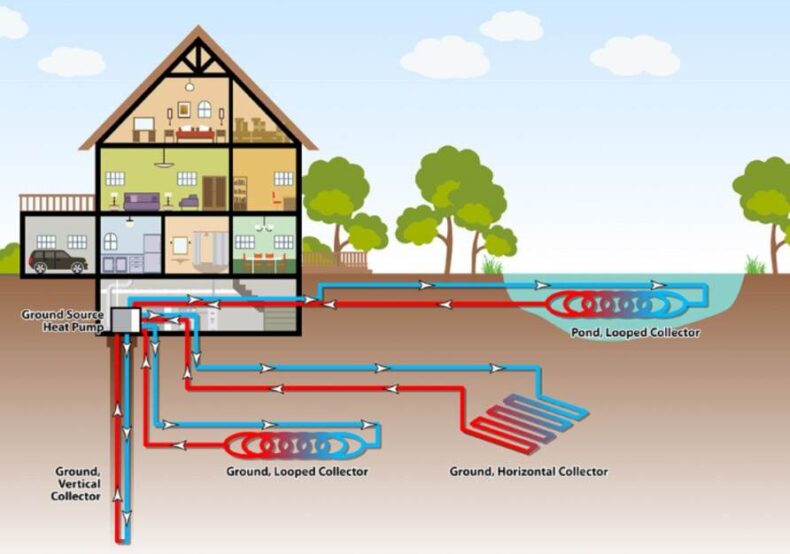Ground source heat pumps, also known as geothermal heat pumps (GHPs) have been in use since the 1940s.
Ground source heat pumps use the constant temperature below the earth as a sustainable resource to warm or cool your home.
It’s a clean energy source ready for the vast majority of us to use, using of which will greatly reduce our electricity bills and carbon footprint.
There are those of you who may still be somewhat skeptical of the technology and wonder what kind of temperature a ground source heat pump produces.
A ground source heat pump extracts heat located underneath the ground. Once extracted it then amplifies that heat, increasing it’s temperature from 42 °F – 57 °F to 68 °F – 78°F.
Table of Contents
Where Does The Ground Source Heat Pump Temperature Come From?
Heating and cooling your home through conventional means accounts for more than half of the energy consumption in a typical home.
This makes it one of the largest expenses and massive emitter of greenhouse gases.
Even though the weather throughout the year fluctuates all around us, the ground underneath your feet, about 10 feet below, is able to maintain constant ground temperatures of 42 °F – 57 °F year-round.
A ground source heat pumps temperature comes from the ground, which is able to soak up 44% of the sun’s solar energy and store it like a solar battery.
Learn more about the cost of a ground source heat pump here.
Can You Use Ground Source Heat Pumps In Any Climate?
Ground source heat pumps can be used in any climate, hot or cold. That’s because the temperature underground remains constant throughout the year regardless of the outside temperature.
In fact, ground source heat pumps are already heating homes worldwide, including all 50 U.S States.
In 2009, according to the U.S Department of Energy report, more than 50% of ground source heat pumps went to 10 states, which included: Florida, Illinois, Indiana, Michigan, Minnesota, Missouri, New York, Ohio, Pennsylvania, and Texas.
This report shows a higher concentration of ground source heat pump installation in states with colder climates and higher population densities.
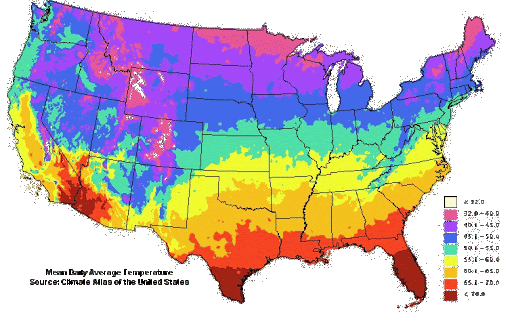
Can Ground Source Heat Pumps Cool?
Yes, ground source heat pumps can most certainly cool. They do this by exchanging heat with the earth through a ground heat exchanger.
As with the majority of ground source heat pumps, they are able to both heat and cool if so equipped.
This is perhaps one of the main differences between ground source heat pumps and conventional air conditioners.
Do Ground Source Heat Pumps Work In Winter?
Yes, ground source heat pumps work in the winter. In fact, they work in any climate or season. The reason for this is underground, the temperature is consistent regardless of the above ground temperature.
10 feet below the ground, the temperature stays 42 °F – 57 °F (5°C – 13°C) year-round.
What Are The Different Types Of Ground Source Heat Pumps?
There are four different types of ground source heat pumps: three of these are closed-loop systems, the fourth is an open-loop system:
- Horizontal
- Vertical
- Pond/lake
- Open loop
Horizonal Loop System
This is generally the most cost-effective option to install. Particularly if you have enough surrounding land for the installation.
To install, it requires trenches dug at least four feet deep.
The most common layouts use two pipes, one buried at six feet, while the other is at four feet.
Alternatively, two pipes put next to one buried five feet in the ground, in a two-foot wide trench.
More recently, the Slinky method was developed. This involves looping pipes in a shorter trench.
Doing this cuts down on installation costs and makes horizontal installs possible in smaller areas where conventional horizontal applications would otherwise not be.
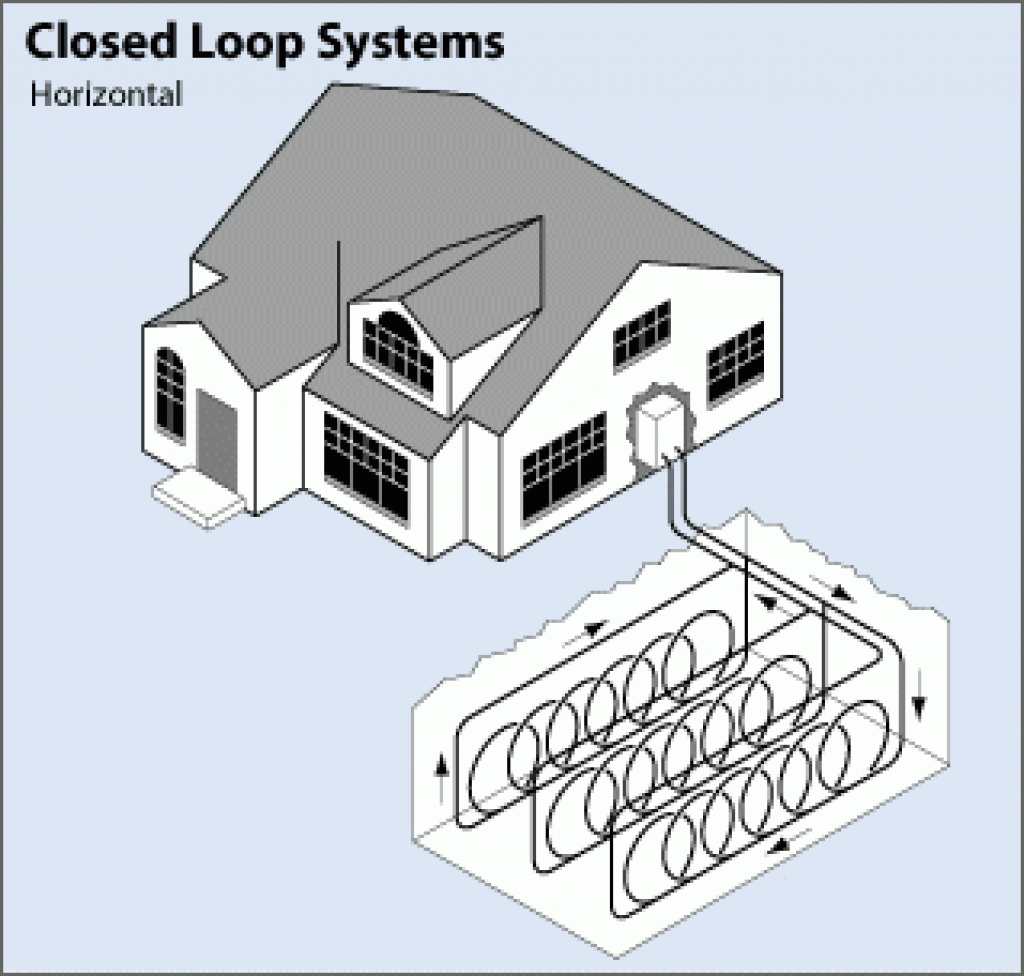
Vertical Loop Systems
Business buildings, schools, and homes with smaller gardens often opt for vertical systems because the land area required for horizontal installation is often prohibitive.
Vertical loops are also used when the depth of the ground is too shallow for trenching.
In order to install a vertical system, holes, approximately four inches (10 cm) in diameter are drilled 20 feet (6 meters) apart and 100 to 400 feet (30 to 120 meters) deep.
Slotted into these holes are two pipes that are connected at the bottom in a U-shape, to form a loop.
Lastly, the vertical loops are then connected to a horizontal pipe which then connects to the heat pump in the building.
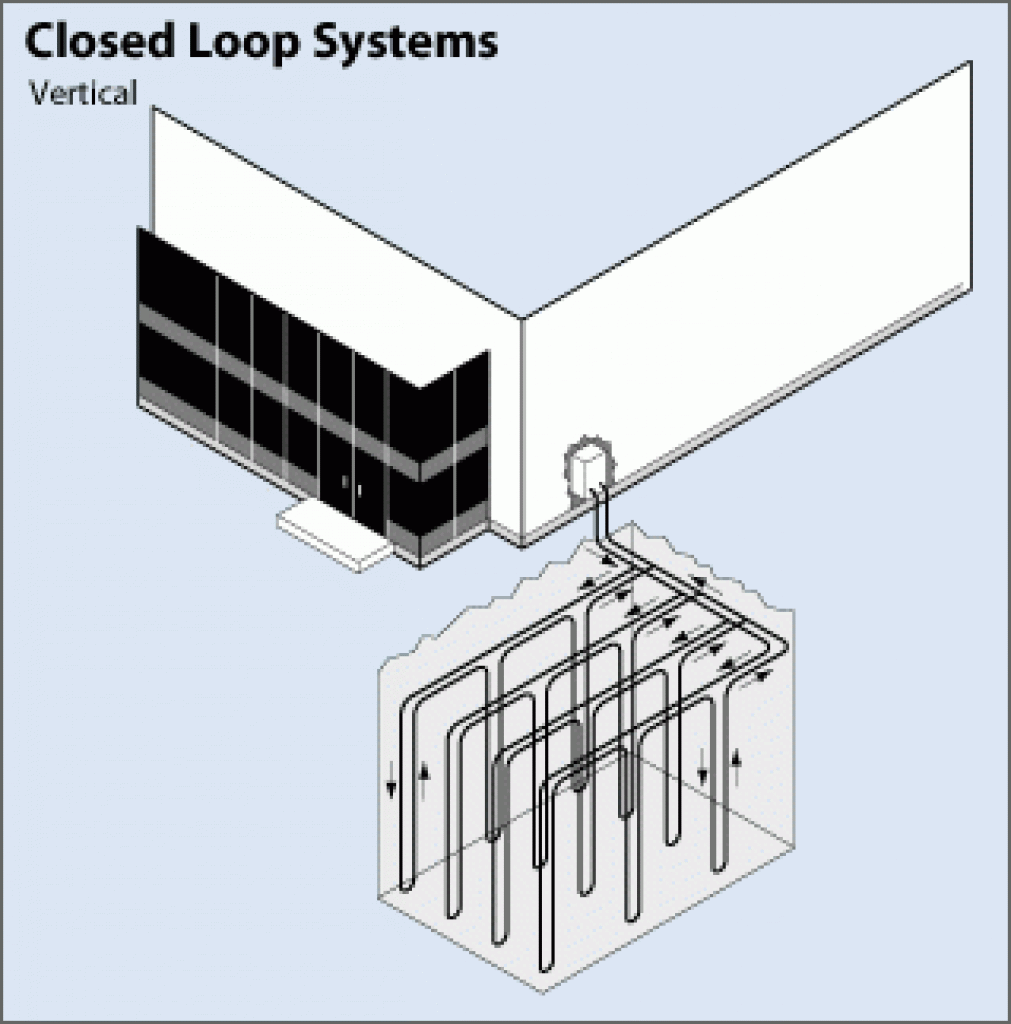
Pond/lake systems
If the site has a water body of sorts in close proximity, then a pond/&lake installation may be the most cost-effective option.
A simple supply line pipe is run underground from the building to the pond/lake.
Once in the lake, it is coiled into circles 8 feet below the surface to prevent any frost from forming.
It’s important to note that coils should only be placed in a water source that meets the minimum volume and depth requirements.
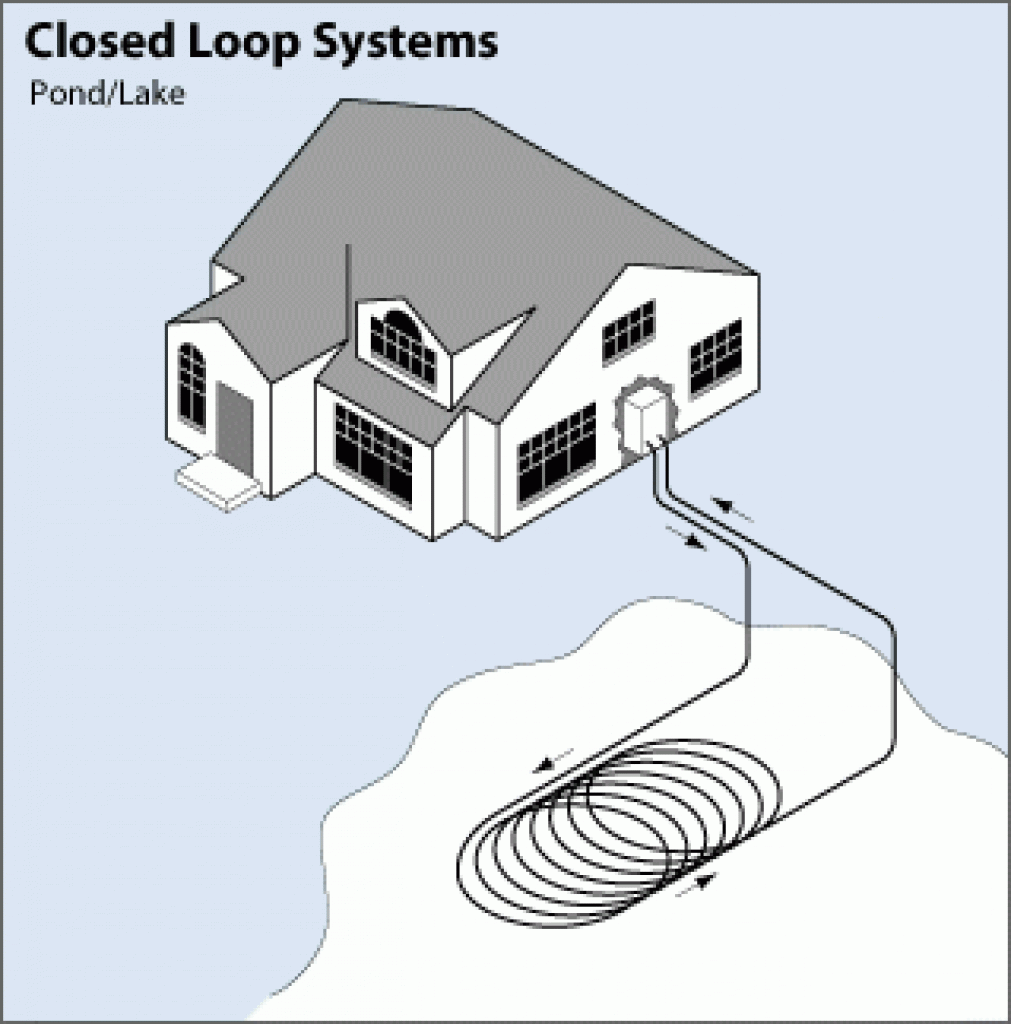
Open loop system
This type of system uses borehole/well or surface body water as the heat exchanges fluid that circulates directly through the ground source heat system.
Once the water has circulated through the system, it returns back to the ground through the well or surface discharge.
The only downside to this system is you must have an adequate clean body of water nearby that has all the local codes and regulations in check.
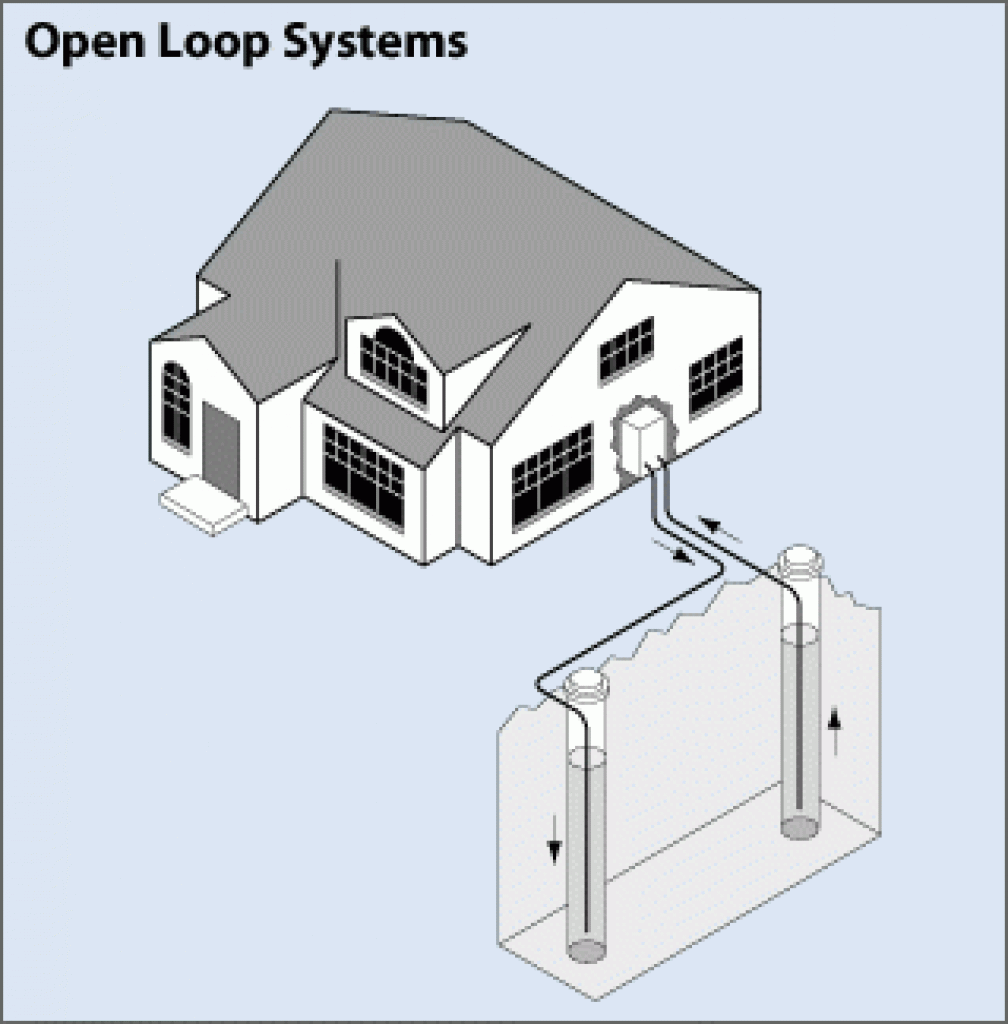
Final Thoughts
Installing a ground source heat pump into your surrounding land may come at a higher price than other more common alternatives.
However, the additional costs are returned to you in the form of energy savings within 5 – 10 years.
Additionally, the loop systems are said to last 50+ years with the inside components (the ones extended into your home) are said to last 25+ years.
Ground source heat pumps are an amazing way to dramatically reduce your home’s carbon footprint, a necessity for the foreseeable future.
If you are in need of grants or need more insight regarding this topic, be sure to visit this website for more information.
Further Reading:

